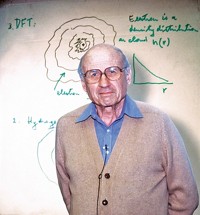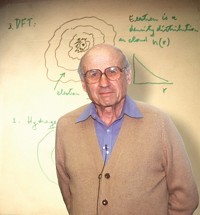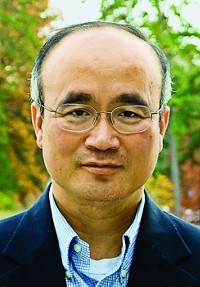Advertisement
Grab your lab coat. Let's get started
Welcome!
Welcome!
Create an account below to get 6 C&EN articles per month, receive newsletters and more - all free.
It seems this is your first time logging in online. Please enter the following information to continue.
As an ACS member you automatically get access to this site. All we need is few more details to create your reading experience.
Not you? Sign in with a different account.
Not you? Sign in with a different account.
ERROR 1
ERROR 1
ERROR 2
ERROR 2
ERROR 2
ERROR 2
ERROR 2
Password and Confirm password must match.
If you have an ACS member number, please enter it here so we can link this account to your membership. (optional)
ERROR 2
ACS values your privacy. By submitting your information, you are gaining access to C&EN and subscribing to our weekly newsletter. We use the information you provide to make your reading experience better, and we will never sell your data to third party members.
Physical Chemistry
ACS Award in Theoretical Chemistry
January 22, 2007
| A version of this story appeared in
Volume 85, Issue 4
Sponsored by IBM
Rodney J. Bartlett, graduate research professor of chemistry and physics at the University of Florida, Gainesville, has advanced chemistry not by using chemicals but by solving equations.
Beginning in the 1970s, Bartlett and his colleagues developed the coupled-cluster (CC) theory for molecular applications. Proposed in the 1950s for nuclear physics phenomena and adapted in the 1960s to the study of electron correlation in atoms and molecules, CC theory did not yet exist in a form that was applicable to most chemical problems.
"We extended the theory, derived the equations, and wrote the first computer programs that did general-purpose applications of coupled-cluster theory," Bartlett says. Specifically, his group wrote the widely used computer program ACES (Advanced Concepts in Electronic Structure), which uses CC and its closely related many-body perturbation theory (MBPT) approximations to solve the molecular Schrödinger equation.
Now, the coupled-cluster theory, with the single, triple, and quadruple excitation contributions first presented by Bartlett and coworkers, allows scientists to accurately determine molecular structures; vibrational, electronic, and NMR spectra; and transition states.
Bartlett says his group's calculations allow chemists, in principle, "to learn everything there is to know about a molecule." An example is Bartlett's work on the experimentally unknown, highly energetic molecules tetrahedral N4, octahedral N8, and pentagonal N5-. Accurate CC calculations show that these molecules can exist under certain conditions and offer identification by their predicted spectra.
Bartlett and his colleagues were also the first to apply MBPT to molecules. Today, second-order MBPT (MP2) is the correlated method that is most often applied in computational chemistry.
"The basic theory that Bartlett has developed with his group laid the groundwork that has led to the rise of coupled-cluster theory as a powerful working tool that is used by thousands of practicing chemists," says Martin Head-Gordon, a professor of chemistry at the University of California, Berkeley.
"Bartlett has been a major force in the development of techniques in the application of quantum mechanics to chemistry," the late Nobel Laureate John Pople once said. "He has done some significant work on detailed applications to individual molecular systems, but the main thrust has been to provide new and useful computational tools for others to use."
Two of Bartlett's classic papers are "Many-Body Perturbation Theory, Coupled-Pair Many-Electron Theory, and the Importance of Quadruple Excitations for the Correlation Problem" (Int. J. Quantum Chem. 1978, 14, 561) and "A Full Coupled-Cluster Singles and Doubles Model: The Inclusion of Disconnected Triples" (J. Chem. Phys. 1982, 76, 1910).
Bartlett, 62, received a B.S. in chemistry and mathematics in 1966 from Millsaps College, Jackson, Miss. He received his Ph.D. in quantum chemistry in 1971 from the University of Florida. He was a National Science Foundation postdoctoral fellow at Aarhus University, in Denmark, and, after several years with Battelle, returned to the University of Florida in 1981 as a professor.
Bartlett says he has the best of both worlds. "When you're a quantum chemist, it's like you're sitting at the top of the mountain," he says. "The distinctions between biochemistry, inorganic, and organic chemistry are less important, as all of chemistry revolves around what the electrons are doing in molecules, and that domain can best be 'seen' by applying theory."
The award address will be presented before the Division of Physical Chemistry.






Join the conversation
Contact the reporter
Submit a Letter to the Editor for publication
Engage with us on Twitter